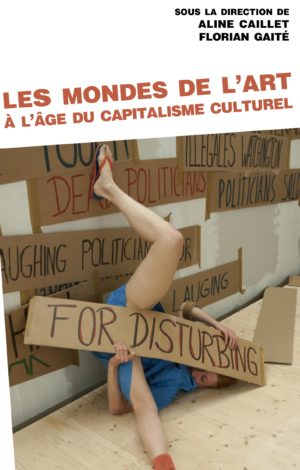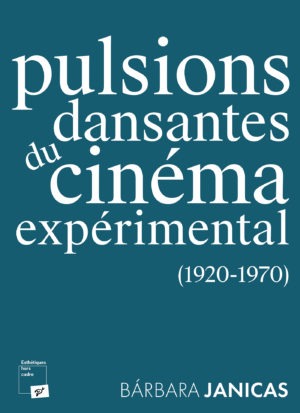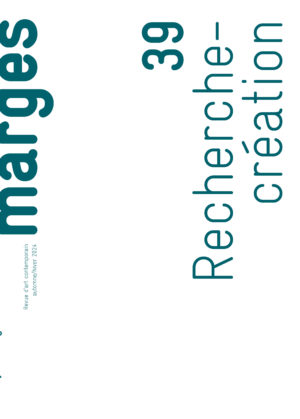« Antropophagism and historiography
Vinicius Spricigo
This article discusses the international reception of the 24th São Paulo Biennial and it aims to analyse the amplification of the notion of Anthropophagy, as well as its limits and effects for the reception of Latin American Art, especially in Brazil, within the narratives surrounding Global Art. For this purpose, it analyses the way in which this edition of the São Paulo Biennial was included in a genealogy of international exhibitions of contemporary art and biennials that emerged in the 1990s. The article presents some attempts to reformulate the national representation model and to reorganize the São Paulo Biennial, attempts that preceded the so-called “global turn”of the contemporary art.
“The exhibition ‘Modernidade, art brésilien du 20e siècle’ (Paris, 1987) : dislocation and assimilation at the dawn of art’s globalization”
Camila Bechelany
Starting from an analysis of the curatorial narrative used for the exhibtion “Modernidade, art brésilien du 20e siècle” (Paris, 1987-88) and from the critical reception it received, we intend to consider the possibilities and limits of a “Brazilian Modernism” at the dawn of the globalization of art. Such reflections could result in a reading of the international history of art that would be open to dislocation and to an understanding of the international art system as a pluricentralized symbolic field.
Local writings, global readings. Brazilian art and architecture in specialist reviews (1943-1964
Cecilia Braschi
Reading the French, English and Brazilian specialized reviews of the 1940, 1950 and 1960, the historiography of Brazilian architecture and art appears as a complex construction from multiple and dialectical local stories. Art and architectural review offers to those stories, related to each political and cultural context, a platform to test their local and regional validity, then to obtain an international approval and legitimacy.
“From the West to China, a study of the expression “abstract art” in its global context
Shiyan Li
This article mainly discusses how the western concept of abstract art is taken over by art criticism in China. Three art critics are examined here: Feng Zikai, Wu Guanzhong and Gao Minglu. They represent chronologically three different paths in the appropriation of abstract art at three significant moments ot China’s history of art: the 1930’s, the years following the Cultural Revolution and the turn of the millennium. In these limited pages we deal with an overview of translation problems for the concept of abstract art and the various expressions associated with it; a description of the effort to understand it, with sometimes misunderstandings and misinterpretations, which bears witness to a desire for dialogue between the West and China; a tracking of the use of neologisms “transfused” by Western thought since the second half of 19th century in modern and contemporary Chinese criticism; an opening on one of the issues of Global Studies facing the uniformity of the use of certain Western concepts (now globalized) in non-Western countries, including China.
« Another kind » art criticism : a response of Chinese art criticism to globalizatio
Annie Lazarus
Alongside the rise of Chinese artists in major international exhibitions in the early 1990’s, globalization has not spared the circles of Chinese art criticism. On the whole, the relatively few texts devoted to this new situation offer an optimistic outlook, encouraging dialogue and dismissing the East/West opposition, deemed unproductive. Yet, globalization has significantly affected the work of critics. In a context where the weight of an ideology promoting national culture and spurring nationalism is very heavy, authors proposed a vocabulary specific to China to analyze Chinese art and, on the other hand, questionned Chineseness or Chinese nature. Gao Minglu approach is emblematic. After having praised Western theories in the 1980’s, in 2009 he proposed a theory reactivating concepts from antiquity, thus denying his former commitments and attracting sarcasm from his peers.
“Translating as an artistic practice. Five propositions at the interface South Africa / World
Katja Gentric
In South Africa the coexistence of multiple languages is felt in the artistic practices, who become like an interface between epistemological spaces. It is the case in the practices of Lerato Shadi, Willem Boshoff, Moshekwa Langa, the duo Dorothée Kreutzfeldt / Bettina Malcomess and the collective ‘The Center for Historical Reenactments’. Nourished by post apartheid critique these works take on the form of a personal fiction, performance close to actionism or “actions furtives” performed by an artist-researcher in his relationship with the historicity of linguistic and social phenomena linked to language.
« Contemporary reminiscences of “east-european art
Jovan Mrvaljevic
This paper attempts to identify the mutations in the perception of the art known as “East-European art” through three historical periods : communist era, the post-communist one and recent times. In doing so we can observe “contemporary reminiscences”; of the experience of East-European art. There are necessary parallels between this experience and contemporary phenomena especially in the debates on the artist’s position in the current context, on collective trends, on the issues of the exploitation of art and of its political content.






